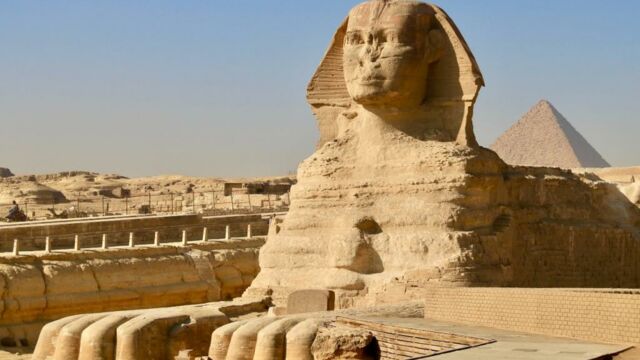The Great Sphinx of Giza is undoubtedly one of the most remarkable monuments of Ancient Egypt. Even by today's standards, this monolithic structure is breathtaking! And even almost 4,500 years after its creation, the statue is still shrouded in mystery: who built it? And for what exact reason? A team of researchers has carried out a number of experiments and believes they have learned more about the origins of this monument.
Discover our latest podcast
Nature helped the Egyptians build the Sphinx
The Great Sphinx of Giza - an Egyptian masterpiece? Of course, but not only! According to a new study by New York University, nature was also involved in the work. More precisely: the wind!
Natural erosion is said to have shaped this rock formation to look like a lion with a human head, and workers are said to have added details to give this structure the appearance we have now known for several millennia.
To reach this conclusion, the researchers used water jets on a small rock formation made of sphinx-like material to simulate the passing of the wind. They explain:
The hardest or most resistant material became the "head" of the lion and many other features - such as the "neck", the "paws" that were placed on the ground at the front and the curved "back" - developed.
Read more:School students discover a 3,000-year-old Egyptian scarab in a surprising location
Other rock formations can take on this shape
This study not only tells us more about the formation of the Great Sphinx of Giza, but also more about the rock formations that can be seen all over the world. As New York University writes in a press release :
Our results provide a simple origin theory of how sphinx-like formations can be created by erosion. In fact, there are rods today that look like sitting or lying animals, which supports our results.
Researchers have tested a 40-year-old theory of wind erosion in exploring the role natural elements had in building an architectural wonder, the Great Sphinx of Giza. And the results are positive.https://t.co/FuP03lTxax
— Ancient Origins (@ancientorigins) November 1, 2023
Read more:Mysterious scroll from ’Book of the Dead’ discovered in Egyptian Queen’s Tomb
This article has been translated from Gentside DE.
Source used:
Pressemitteilung New York University: Did Nature Have a Hand in the Formation of the Great Sphinx?















